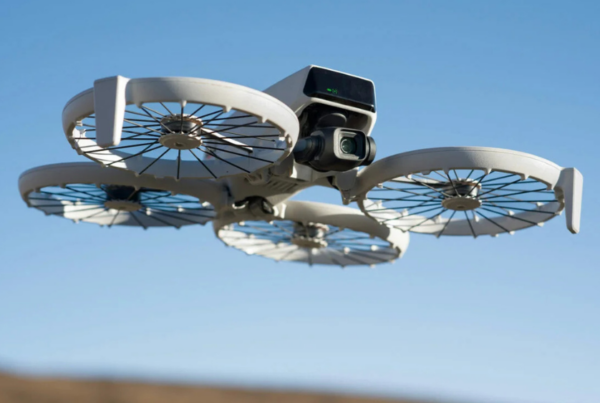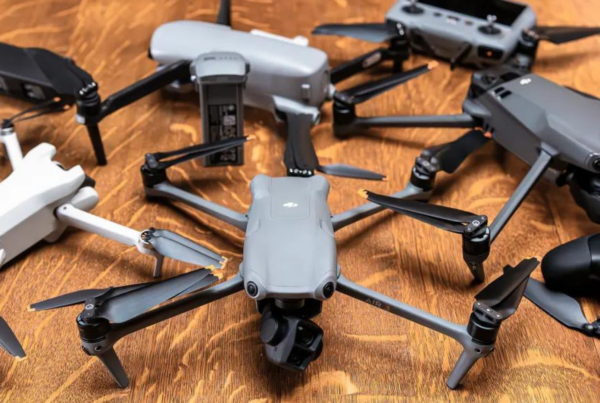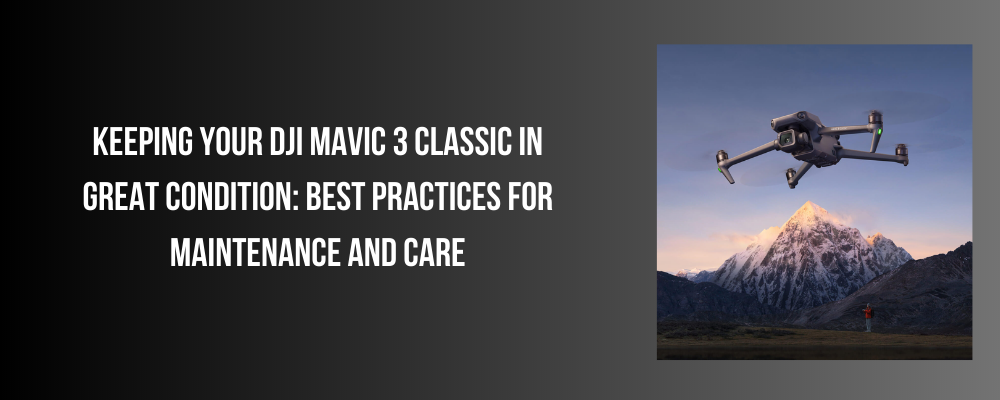
Introduction:
- Introduction of the DJI Mavic 3 Classic drone and its popularity in the market.
- importance of regular maintenance and care for the drone.
- Preview of the article’s main points.
Pre-Flight Preparation
- importance of pre-flight preparation, including inspecting the drone and its components for damage or malfunction.
- checklist of things to inspect before taking off, such as the battery, propellers, and camera lens.
Flying Tips
- Providing tips for flying the drone safely and avoiding crashes or other accidents.
- Information on how to avoid flying in restricted airspace and how to use the drone’s features, such as obstacle avoidance and return home.
Post-Flight Maintenance
- importance of post-flight maintenance and how it can prolong the lifespan of the drone.
- Providing a checklist of things to do after landing, such as checking the battery level and cleaning the drone’s exterior.
Battery Care
- Discussion of the importance of proper battery care and how it can affect the drone’s performance and lifespan.
- Providing tips for storing and charging the batteries, including avoiding overcharging and storing them in a cool, dry place.
Storage and Transportation
- Providing tips for storing and transporting the drone safely and securely.
- Discussion of the importance of using a proper carrying case and avoiding exposure to extreme temperatures or humidity.
Conclusion:
- the main points of the article.
- Importance of regular maintenance and care for the DJI Mavic 3 Classic.
- Encouraging readers to implement these best practices to ensure their drone remains in excellent condition for years.

Introduction
The DJI Mavic 3 Classic drone has become increasingly popular in the market due to its advanced features and capabilities. However, like any piece of technology, it requires regular maintenance and care to ensure its optimal performance and longevity. Neglecting to properly maintain and care for your drone can result in malfunctions, crashes, and reduced lifespan.
In this article, we will discuss the best practices for maintaining and caring for your DJI drone. We will cover pre-flight preparation, flying tips, post-flight maintenance, battery care, and storage and transportation. By implementing these practices, you can ensure that your drone remains in excellent condition for years to come.
Pre-Flight Preparation
Pre-flight preparation is crucial for the safe and successful operation of your DJI Mavic 3 Classic drone. Before taking off, it is important to inspect the drone and its components for any damage or malfunctions. This will help to prevent accidents and ensure that your drone is functioning at its best.
Here is a checklist of things to inspect before taking off:
- Battery: Ensure that the battery is fully charged and securely installed in the drone.
- Propellers: Check that the propellers are in good condition and free from any cracks or damage. Also, make sure that they are correctly attached to the drone.
- Camera lens: Inspect the camera lens for any scratches or debris that could affect the quality of your footage.
- Gimbal: Check that the gimbal is functioning properly and securely attached to the drone.
- Obstacle avoidance sensors: Verify that the obstacle avoidance sensors are functioning correctly and free from any obstructions or debris.
- GPS signal: Confirm that the drone has a strong GPS signal and is properly calibrated.
- Controller: Ensure that the controller is charged and functioning correctly, with no loose or damaged components.
By following this checklist and inspecting your drone before taking off, you can prevent potential issues and ensure a safe and successful flight.
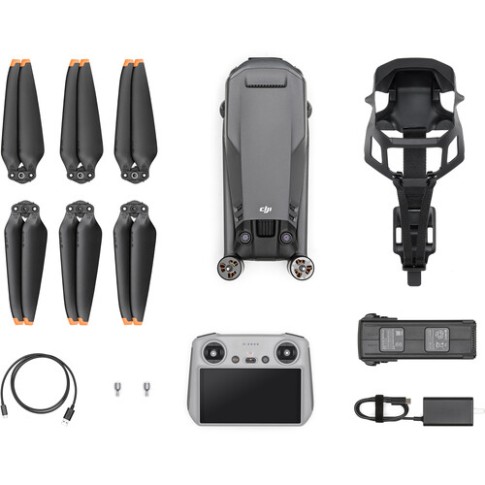
Flying Tips
Flying your DJI Mavic 3 Classic drone can be an exhilarating experience, but it is important to prioritize safety to avoid accidents or crashes. Here are some tips for flying your drone safely:
- Check for restricted airspace: Before flying your drone, check for any restricted airspace or no-fly zones in your area. You can use the DJI Fly Safe database or other apps to identify restricted airspace and ensure you are complying with regulations.
- Keep the drone in sight: Always keep your drone in your line of sight while flying it. This will help you avoid collisions with obstacles or other aircraft.
- Use obstacle avoidance: Take advantage of the drone’s obstacle avoidance features to help avoid crashes. However, keep in mind that these features are not foolproof and should not be relied on solely.
- Avoid flying in poor weather conditions: Strong winds, rain, or other poor weather conditions can affect the drone’s stability and make it more difficult to control. Avoid flying in these conditions whenever possible.
- Use Return-to-Home (RTH) feature: If you lose connection with your drone or encounter an emergency, use the RTH feature to safely return your drone to its takeoff point.
- Practice in an open area: When starting out, practice flying your drone in an open area away from obstacles or other people. This will help you get comfortable with controlling the drone and avoid accidents.
By following these tips, you can fly your DJI Mavic 3 Classic drone safely and avoid accidents or crashes. Remember to prioritize safety at all times to ensure a successful flight.
Post-Flight Maintenance
Post-flight maintenance is just as important as pre-flight preparation for keeping your DJI Mavic 3 Classic drone in excellent condition. By properly maintaining your drone after each flight, you can prolong its lifespan and ensure optimal performance for future flights.
Here is a checklist of things to do after landing your drone:
- Check the battery level: After landing, check the battery level to ensure that it is not depleted. If the battery level is low, recharge it immediately to prevent damage to the battery.
- Clean the exterior: Wipe down the drone’s exterior with a microfiber cloth to remove any dirt or debris. This will help prevent buildup that could affect the drone’s performance.
- Inspect the propellers: Check the propellers for any damage or wear and tear. If you notice any cracks or damage, replace them before the next flight.
- Store the drone in a safe place: Store the drone in a safe, dry place away from direct sunlight or extreme temperatures. Use a protective case or bag to prevent damage from accidental drops or impacts.
- Download flight data: Download flight data from the drone and analyze it to identify any potential issues or areas for improvement.
By following this checklist and properly maintaining your drone after each flight, you can prolong its lifespan and ensure optimal performance for future flights.
Battery Care
The batteries of your DJI Mavic 3 Classic drone are a critical component that can greatly affect its performance and lifespan. Proper battery care is essential to ensure that your drone operates safely and efficiently. Here are some tips for taking care of your drone’s batteries:
- Store the batteries in a cool, dry place: Avoid storing the batteries in extreme temperatures or humid environments, as this can damage the batteries and reduce their lifespan.
- Avoid overcharging: Do not overcharge the batteries, as this can damage them and reduce their capacity. Use the DJI battery charger or a reputable third-party charger to ensure that the batteries are charged correctly.
- Use a storage charge: If you are not using your drone’s batteries for an extended period, it is recommended to use a storage charge. This will help to maintain the battery’s health and prevent it from degrading over time.
- Monitor the battery’s health: Keep an eye on the battery’s health and capacity over time. If you notice that the battery is not holding a charge as well as it used to, it may be time to replace it.
- Charge the batteries before each flight: Make sure that the batteries are fully charged before each flight to ensure that the drone operates at its best.
By following these tips and taking care of your drone’s batteries, you can ensure optimal performance and prolong the lifespan of your drone.
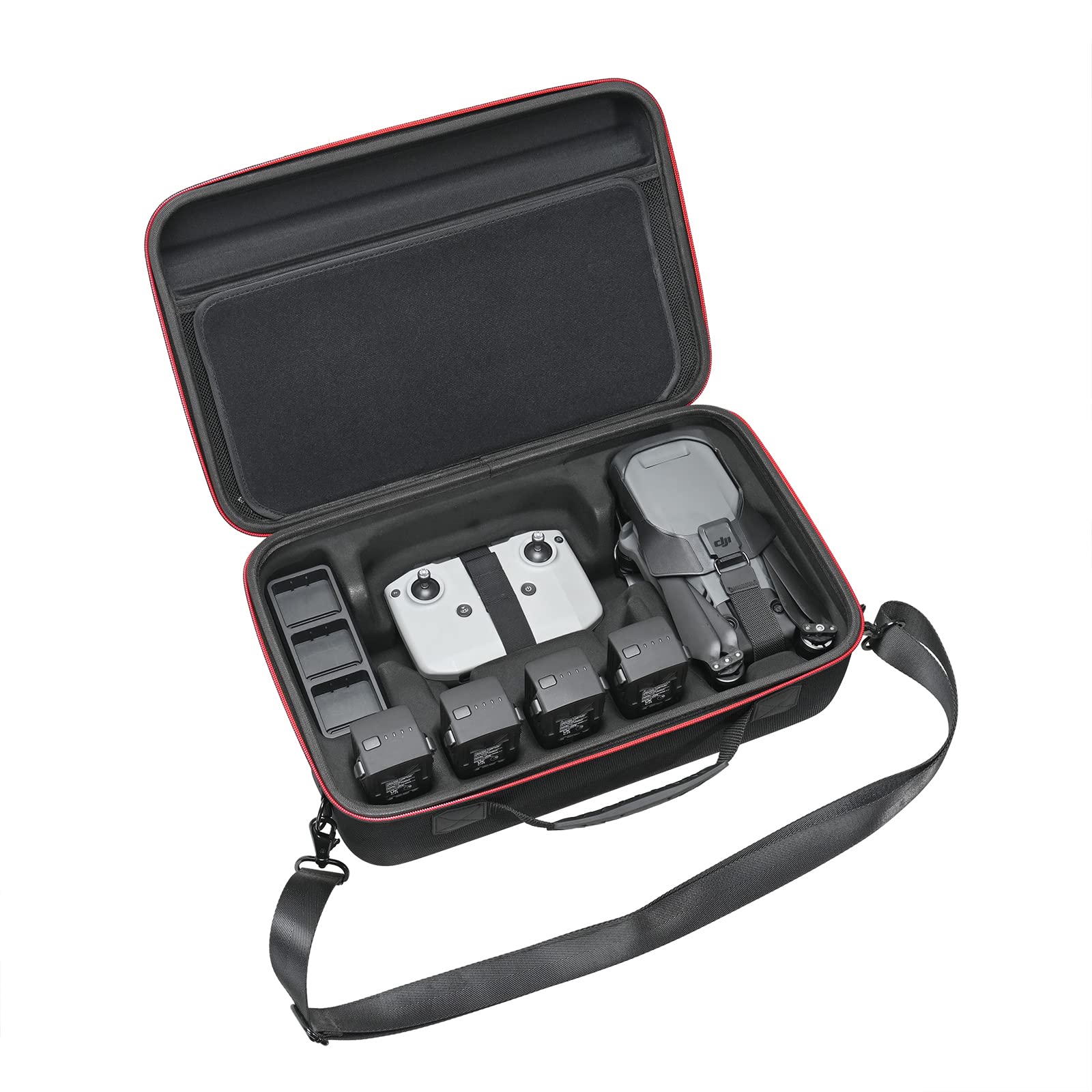
Storage and Transportation
Proper storage and transportation are essential for protecting your DJI Mavic 3 Classic drone from damage and ensuring its longevity. Here are some tips for storing and transporting your drone safely:
- Use a proper carrying case: Invest in a good quality carrying case that is specifically designed for your drone. This will protect your drone from scratches, impacts, and other damage during transportation.
- Store the drone in a cool, dry place: Avoid storing the drone in areas that are exposed to extreme temperatures or humidity, as this can damage the drone’s components.
- Remove the propellers: When storing or transporting the drone, remove the propellers to prevent them from getting damaged or damaging other items.
- Keep the battery separate: When transporting the drone, make sure to remove the battery and store it in a separate case or compartment.
- Avoid direct sunlight: Do not leave the drone exposed to direct sunlight for extended periods, as this can damage the drone’s components.
By following these tips, you can ensure that your drone is stored and transported safely and securely. This will help to protect your investment and ensure that your drone continues to perform optimally for years to come.
Conclusion
In this blog, we discussed best practices for the maintenance and care of the DJI Mavic 3 Classic drone. We started by emphasizing the importance of pre-flight preparation, including inspecting the drone and its components for any damage or malfunctions. We also provided tips for flying the drone safely and avoiding crashes or other accidents, such as avoiding flying in restricted airspace and using the drone’s features like obstacle avoidance and return to home.
Next, we discussed the importance of post-flight maintenance, such as checking the battery level and cleaning the drone’s exterior. We then focused on battery care, including storing and charging the batteries properly to ensure optimal performance and longevity. Finally, we provided tips for storing and transporting the drone safely and securely.
In conclusion, it is important to regularly maintain and care for your DJI Mavic 3 Classic drone to ensure it remains in excellent condition and performs optimally. By implementing these best practices, you can protect your investment and enjoy flying your drone for years to come.
Popular tags
DJI Mavic 3 Classic maintenance, DJI Mavic 3 Classic tips, DJI Mavic 3 Classic accessories, DJI Mavic 3 Classic service

